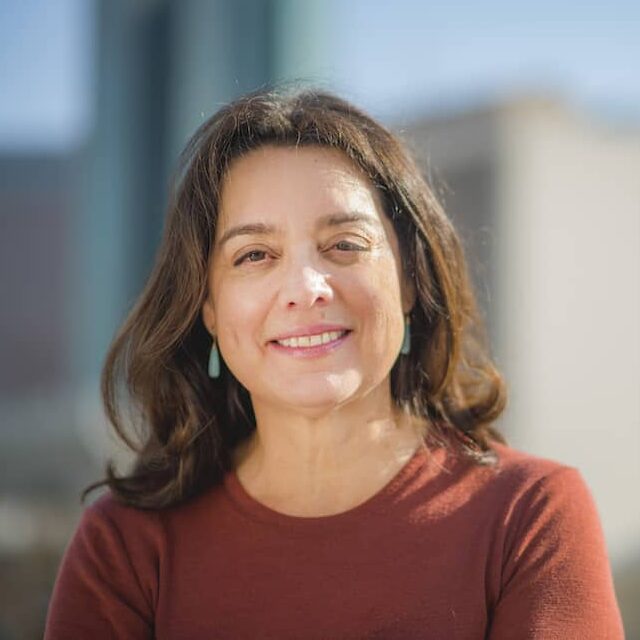I’m in my 50s. I’ve been a journalist for more than half my life. I’ve been one of a few Hispanics in a newsroom and one of many Hispanics in a newsroom. Yes, many. There was a time (early ‘90s Los Angeles Times) and there were places (mid-’90s Albuquerque Tribune), when we were not as few and far between as we have since become. Not that management was diverse. Or that the share of journalists of color ever reached parity with the communities we covered. Or that we even came close.
I doubt any newsroom in this state now has reached parity. But I can’t tell you for certain. No local baseline count exists of industry staffing. That may soon change because community members are demanding that it does. They want the same kind of transparency and accountability from newsrooms that newsrooms seek from other institutions. They also know the count is only a beginning. Presence without power is a placebo.
We at COLab have taken a lead in many conversations this year about subjects like newsroom diversity and why it matters that we do more than check boxes. We have listened to Black and Latinx Coloradans talk about the harm local news coverage does when it excludes, pigeonholes, and inflames. Trust, which is to say the lack of it, in the relationship between newsrooms and communities has been central to these conversations and the recommendations for change that have followed since. I use the word “relationship” loosely. Most community members described something closer to strip-mining operations. Come into communities of color, extract, exploit, leave behind damage, external and internal.
I wish I could say that as a New Mexican shaped by the overt prejudice I know my father and grandparents experienced, I was fully aware of the power of media. I wasn’t. I came into this business as a first-generation college-educated, English-only Hispanic who was just self-aware enough to note that I was a trifecta for my diversity-seeking bosses: Female, Hispanic, assimilated.
I sublimated (reflexively, subconsciously, consciously) an ethnic identity to the point that when I was offered a job at the Denver Post as a city columnist, a plum job, the first Latina columnist at a major metro daily in Colorado, I balked. I feared tokenization. I feared I would be measured by the community, and found to be lacking. I had to take Spanish Berlitz classes. Could there be a better symbol of my own estrangement?
That job and the subsequent columnist job at the Rocky Mountain News were gifts. They allowed me an unfolding of self. They required me to experience the hunger of communities marginalized by the powers-that-be to be seen and heard in the full spectrum of their humanity, to be afforded the dignity of mattering to this state because they helped build it, shape it, grow it, give it beauty. They freed me from the failure of imagination that labeled something a “Latino story” or a “Black story” or a fill-in-the-blank story rather than a Colorado story, an American story, a human story. That man in the photo above, that’s the late, great John Sandoval. He built sidewalks all around Denver, literally laying its groundwork. I wrote about him at the Rocky because you deserved to know him as much as he deserved to be known as more than a name stamped on concrete.
This is the power of local news. We can contribute to ignorance through shallow or absent coverage. We can enlighten through its opposite. The former corrodes trust, the latter expands it.
Why am I telling you all this? And why am I telling you all this in the context of an email in which I will ask — am asking — for your support for COLab? Because an urgency inhabits COLab as the year winds down and the next looms. Because I have come to know so many younger journalists of color who know themselves in ways I did not and who are demanding change and, my God, how they move me. Because our conversations with community members, which will continue next year, have brought me into the orbit of powerful women, Latina and Black, younger, elder, urban, rural, journalists and nonjournalists, willing to add to their already overwhelming workloads to help create equitable newsrooms and news coverage.
“Sometimes, you just have to believe that you are the rock that makes the ripple,” Deb Ortega, a University of Denver professor, told me. Ortega worked with other community members and journalists on the recently issued recommendations to change local news for the better.
Equity is a basic ask. Its implementation should be a given. But threading all these conversations that both revolve around race and ethnicity and transcend each is the recognition that the silos of misunderstanding and misinformation in which we have come to exist are dangerous. They threaten individuals and communities. They risk a shared future and a common good.
We are together at a moment in time and place to catapult into that more equitable future. My colleagues, newsroom partners, foundation supporters have plans for action for the next year — on this front and others. And you who support us, well, you are among the rocks that make the ripples. You live among the John Sandovals of our COLab universe, laying our shared path. Together we build, together we make change.
This post was sent as a letter to our email subscribers on Tuesday, December 28, 2021. Join our email list to learn more about COLab and the work we are doing.




